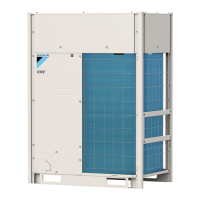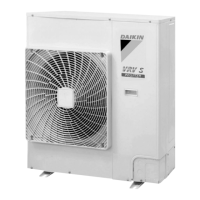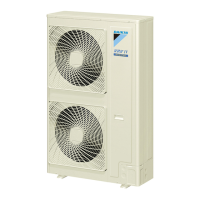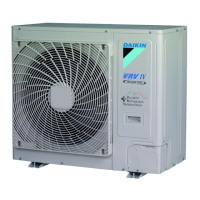13
3P184443-12N English
Small sealing pad
(accessory) (11)
Clamp (4)
(Large ×4)
Insulation for tting
(accessory) (9)
Insulation for tting (accessory) (8)
Wrap the piping union
with the sealing pad.
(accessory)
Liquid piping
(for liquid pipe)
(for gas pipe)
Gas piping
Fig. 16
CAUTION
Be sure to insulate any eld piping all the way to the piping connection inside the unit. Any exposed
piping may cause condensation or burns if touched.
7. DRAIN PIPING WORK
(1) Carry out the drain piping
• Lay pipes properly to ensure that drainage can occur without problems.
• Employ a pipe with either the same diameter or with the diameter larger (excluding the raising section)
than that of the connecting pipe (PVC pipe, nominal diameter 1 in., outside diameter 1-1/4 in.).
• Keep the drain pipe short and sloping downwards at a gradient of at least 1/100 to prevent air pockets
from forming.
• If the drain hose cannot be sufciently set on a slope, refer to PRECAUTIONS FOR DRAIN RAISING
PIPING on page 14.
• To keep the drain hose from sagging, space hanger bracket every 40 to 60 in.
1/100
gradient or more
Hanger bracket
GOOD
40 – 60 in.
WRONG WRONG
Fig. 17 Fig. 18
CAUTION
Water pooling in the drainage piping can cause the drain to clog.
• Use the attached drain hose (1) and metal clamp (2).
• Insert the drain hose into the drain socket up to the base, and tighten the clamp securely within the
portion of a gray tape of the hose-inserted tip. Tighten the clamp until the screw head is less than 5/32
in. from the hose.
• Wrap the attached large sealing pad (10) over the metal clamp (2) and drain hose to insulate.
• Make sure that thermal insulation work is executed on the following 2 spots to prevent any possible
water leakage due to dew condensation.
• Indoor drain pipe
• Drain socket

